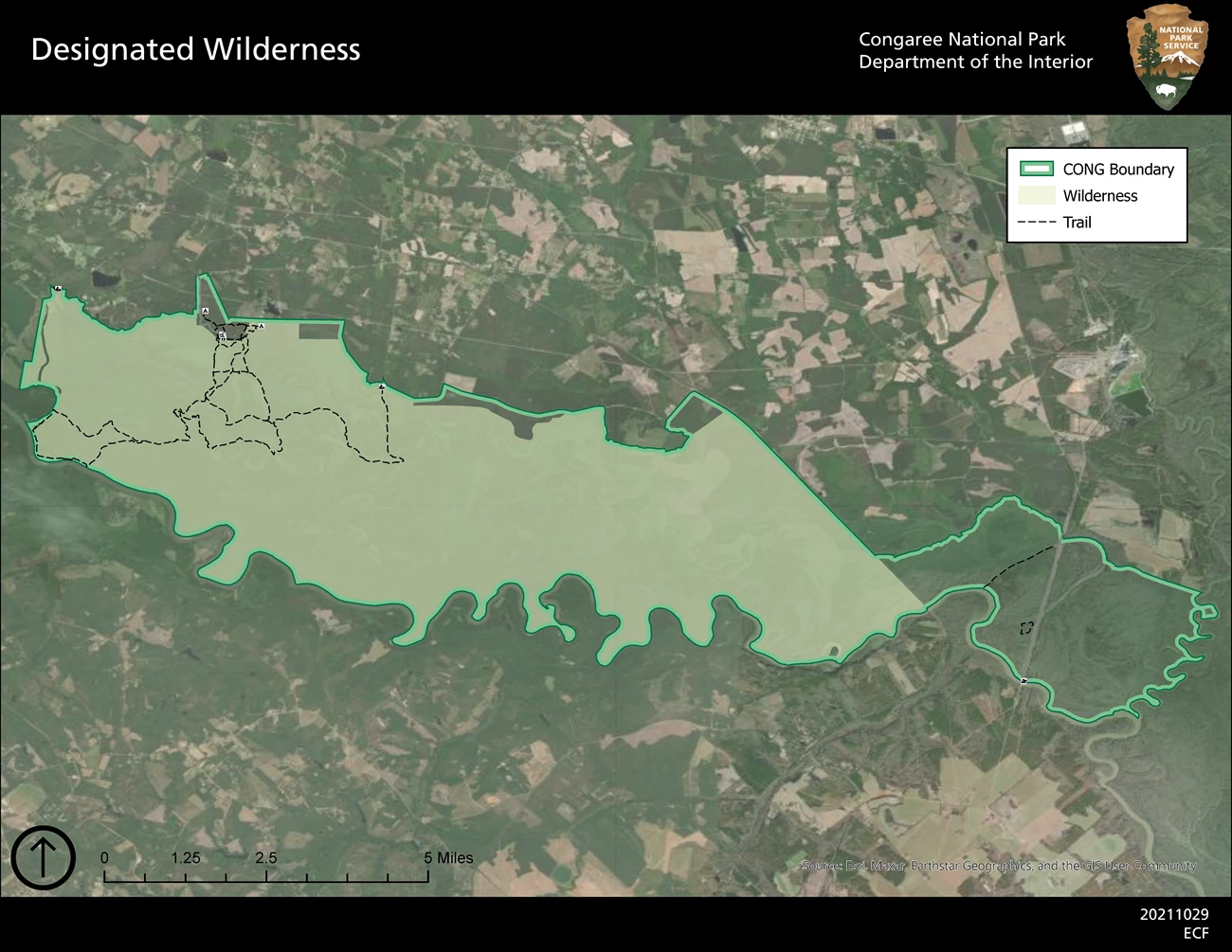|
Visit our keyboard shortcuts docs for details
During the winter months, waters from the Congaree and Wateree Rivers sweep through the floodplain of the Congaree National Park Wilderness in South Carolina - opening up a new, surreal world. Kayak through the forest and experience this special place through the eyes of local veterans who find a reprieve in the healing and dynamic waters. Wilderness Categories at CongareeThe National Wilderness Preservation System was established by the Wilderness Act of 1964. Today, this national network of more than 800 federally designated wilderness areas contains over 110 million acres in 44 states and Puerto Rico. The National Park Service, along with the U.S. Forest Service, U.S. Fish and Wildlife Service, and Bureau of Land Management, manage these wilderness areas as an enduring resource for present and future generations.There are five categories of NPS wilderness: eligible, proposed, recommended, designated, and potential wilderness. Congaree has designated wilderness, as well as eligible wilderness.Click the panels below to read about each. For this category, Congress has designated some or all of the national park as wilderness and a component of the National Wilderness Preservation System. The NPS is required to manage the wilderness area according to the Wilderness Act, a federal law, and NPS policy. Both law and policy emphasize the requirement to preserve the area’s wilderness character.
Congaree currently has 21,700 acres of designated wilderness. This area is named the Congaree National Park Wilderness. For this category, the NPS has determined through a Wilderness Eligibility Assessment that some or all of the national park possesses the qualities and character, as identified within the Wilderness Act, which would qualify it for possible future designation within the National Wilderness Preservation System. Eligible wilderness is not designated wilderness, and is managed to preserve its wilderness character according to NPS policy rather than the Wilderness Act, a federal law.
Congaree currently has 3,937 acres of eligible wilderness. 
Congaree Wilderness Character*Most of the following text was taken from Congaree National Park's Wilderness Character Narrative. Sections have been updated to reflect current information. If you are interested in reading the full document, please Contact Us. Although up to a quarter of what is now Congaree National Park was either clear cut or selectively logged in the 19th and 20th centuries, the inaccessibility of some areas created pockets of old-growth forest which would become the 11,000-acre core area of the Congaree Wilderness. This small pocket of land managed to escape the intensive land use that occurred along the nearby Santee, Wateree, and Broad rivers. This tract, surrounded by mature second-growth forests, is now the largest contiguous stand of Southern old-growth bottomland hardwood forest in the nation. Historic and Ongoing Human ConnectionsNational parks like Congaree, and the wilderness areas within, are the homelands of Indigenous peoples since time immemorial.This landscape here has been modified by humans in countless ways over thousands of years. Examples of cultural features in the Congaree National Park Wilderness include relict agricultural field sites, earthen mounds built to protect cattle during floods, bridge abutments to facilitate travel, and dikes intended to protect crops from flooding. 
NPS Photo Congaree Wilderness TodayFederal designation of wilderness is the highest degree of permanent protection. The Congaree wilderness spans 21,700 acres. For perspective, the entire park encompasses 26,692.6 acres. Along with being over 80% Federally designated Wilderness, the park also boasts global recognition as a UNESCO International Biosphere Reserve and an Important Bird Area (Audubon Society). 
NPS |
Last updated: September 29, 2024
